How to properly propagate pomegranate cuttings at home
If desired and following the rules of breeding at home, you can grow lemon, tangerine, coffee, pomegranate trees. In addition to the beauty in the home interior and the aroma during flowering, they get full fruits from the tree. Pomegranate can be grown by propagation by young cuttings and during the year pluck the ripe, not only tasty, but also healthy, pomegranate fruits.
Is it possible to propagate pomegranate by cuttings
At home, pomegranates are grown from seeds, by grafting, green shoots, lignified cuttings, which, after pretreatment, are planted in pots for rooting in the soil. With proper care and cultivation, indoor pomegranate grows in height from 0.7 to 2 meters, depending on the variety.
Knowledge of the Japanese technology for forming a miniature indoor bonsai tree will also help to create a tree of the right size and beautiful shape.
Method advantages
Cutting is a method of growing plants that is used for different crops, including pomegranate.
The use of cuttings has several advantages over other methods.
A stalk (shank, shoot) is a small shoot, it grows quickly and after a year or two turns into a small tree, pleases with wonderful flowering and first fruits. When planting a shank from a well-known tree, they know in advance the quality of the expected fruit, the care requirements and the behavior of the plant.
What cuttings are suitable
Chubuki are taken from young and strong shoots, 1 year old, they should have from 4 to 6 buds, 20-25 centimeters long. You can take the shanks from the shoots of the pomegranate root system. In the lower part, the shank is cut under the kidney, the upper part is cut half the distance between the kidneys.
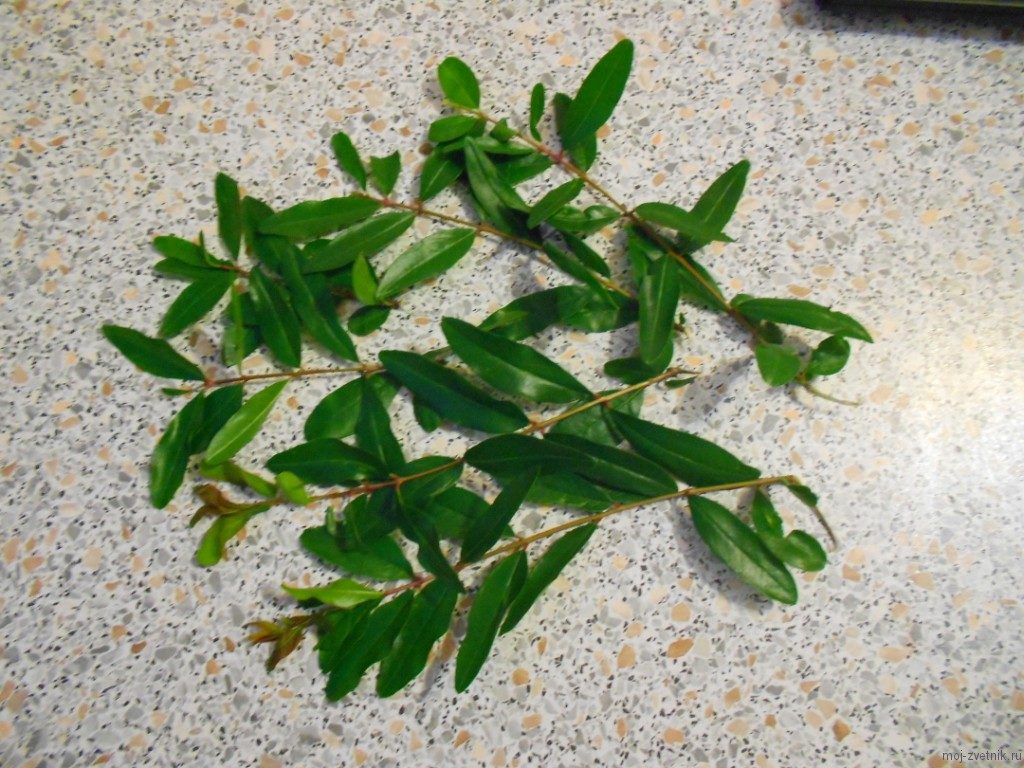
Optimal dates for disembarkation
In the spring, the awakening of all living things from the winter cold begins, the buds of the trees swell, the leaves bloom, the plants are gaining color. Therefore, for cutting the shanks, they choose the dormant time of the trees so as not to harm the plant.
Cuttings in the water will begin to come to life, they will sprout roots. It is advisable to plant the material in the soil in early May - this is the most optimal time for the start of rooting and growth of seedlings.
Required soil composition and pot volume
For growing pomegranate at home purchased soil is suitable - for citrus trees, but you can also compose the soil yourself - from a small amount of small river, washed from clay, sand, turf soil, leaf humus, peat.In no case should you use oak soil, as this soil has an acidic environment.

The plant must be transplanted in the first years every year (in early spring), each time increasing the size of the pot. If the pot is large for the root system, the tree will grow into roots to fill the pot. Only when the roots fill the pot will the tree begin to grow. When the pomegranate grows up, you can take a large clay pot in which it will be comfortable for more than one year.
Scheme and technology of planting in the ground
Chubuki with roots are planted in a shallow wide pot at a distance of at least 10 centimeters from each other, so as not to damage the developing roots of the planting material during transplantation. The shanks are planted obliquely, only part of the cuttings with the root system is sprinkled with earth, the next bud should be at the top, it is not covered with earth.
The earth is not tamped so as not to damage the delicate roots, watered with the addition of Kornevin (or any other root growth stimulator) to improve rooting and development of the root system. The next watering is carried out in a week. The pot with shanks is covered with a plastic bag and tied at the bottom so that there is no air access. Chubuki are regularly ventilated so as not to cause the process of decay.
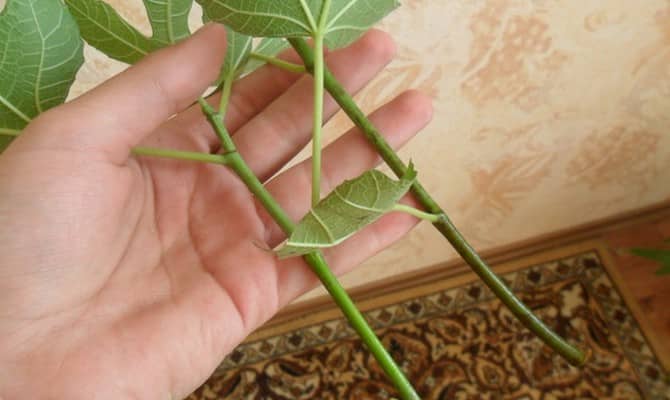
Method for rooting sprouts in water
The method of rooting cuttings in water is used at home, when breeding plants, flowers, shrubs. Plants such as grapes, roses, chrysanthemums, begonias, currants, gooseberries reproduce well in this way. When breeding by this method, you can visually observe the viability of the cuttings, the development of its root system; if necessary, using special means, help the plant in its further development and growth.
Materials for the procedure
After cutting the cuttings, the lower cut is dipped into a dry mixture of Kornevin and crushed activated carbon (in equal amounts), the excess of the adhering mixture is shaken off so as not to cause the death of the planting material. Cuttings are placed in a bowl of water in a warm, bright place. It is advisable to take glass dishes for cuttings, made of white glass.
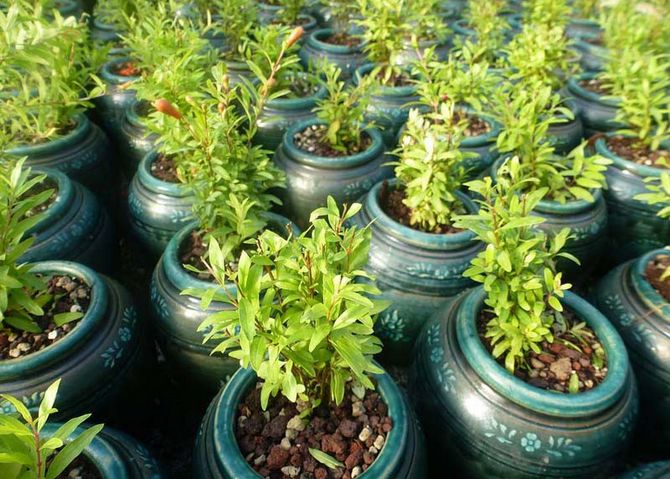
Plastic dishes are lightweight, unstable, and tip over quickly, which causes unpleasant troubles and damage to the cuttings that have appeared. The development of the roots is clearly visible through the transparent glass. If the water becomes cloudy and mucus appears on the roots, they must be carefully rinsed with warm water and filled with fresh, warm water separated from chlorine.
Root appearance period
Within a week, the buds of the shoots will begin to turn green and swell, by the end of the week the first white roots will hatch. Root development and growth will begin over the next week.
With the formation of a large number of powerful, well-branching, roots, it can be determined that the processes are strong, they will surely take in, and the tree will quickly take root and grow.
In the presence of weak, thin roots, it is clear that the root system does not develop enough, the process is not viable, and may die during transplantation. It is necessary to dilute Kornevin in water at the rate of 1 milliliter per 1 liter of warm water and keep the planting material in this solution for 12 hours, then put it back in clean water. When a well-developed, dense root system is formed, the shoots are transplanted into a pot to a permanent place.
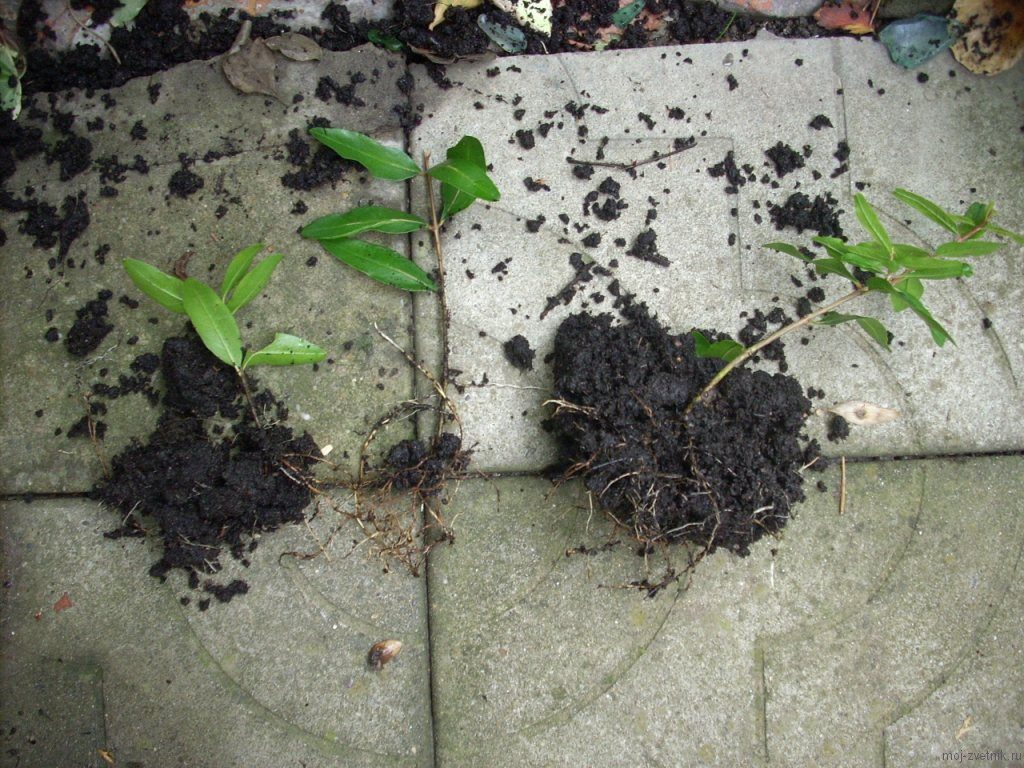
Planting in prepared soil
After the appearance of 3-4 young shoots with leaves, the cuttings are transplanted into separate pots without damaging the root system with an earthen lump. Drainage is poured at the bottom of the pot. The pots are placed on the windowsill (provided that the windowsills are wide), in the room on the south side; in bright sun, the plant is shaded so that the sun's rays do not burn the leaves.You can put the pot in a place that is well lit, opposite the window - this is the best option for plant development.
Further cultivation and care
The further maintenance of the pomegranate at home includes competent watering, fertilization, pruning and crown formation, and transplanting. It is necessary to water the plant with water, separated from the residual chlorine contained in it (in the case of chlorination of drinking water), at room temperature. The clod of earth should not dry out. Excess water must be poured out of the pan, with an excess of moisture, the roots will begin to rot, and the plant will die.
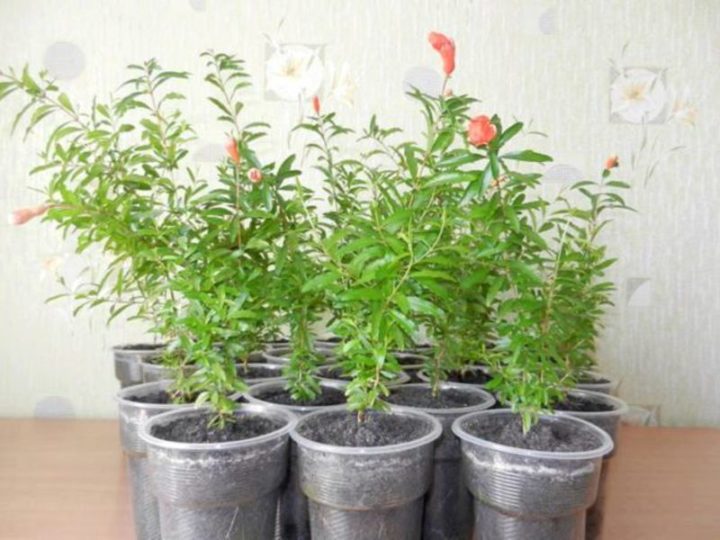
Top dressing of pomegranates is best done with the use of Potassium Humate, a universal drug that stimulates the growth and development of the plant (the frequency of top dressing and the preparation of the solution are indicated in the instructions). At the beginning of flowering, the plant can be treated with Bud, which stimulates the amount of bud and fruit formation.
With the development of the root system and the emergence of the roots from the bottom of the pot, the pomegranates must be transplanted into containers with a large volume. The crown is formed from the beginning of the growth and development of the tree, by pinching the young shoots, so that later, when the crown is neglected and disorderly, it does not cause severe damage to the plant (when pruning branches).
Compliance with the basic rules for caring for a pomegranate tree will help to grow a beautiful indoor plant in 2-3 years, which will bring aesthetic pleasure to the home, decorate the interior and pamper loved ones with tasty and healthy fruits.
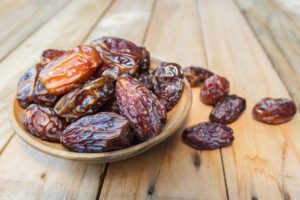

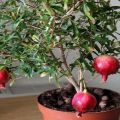





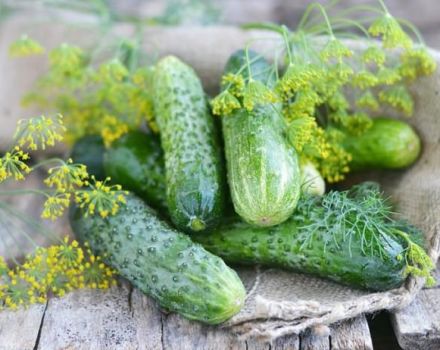

Thank. I will definitely use your advice on rooting and growing a pomegranate seedling .. Sincerely Natalia.